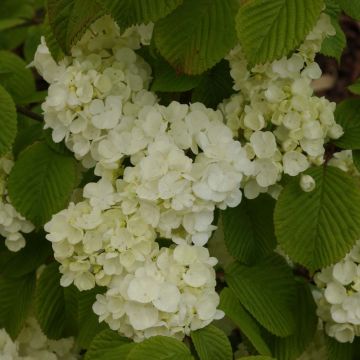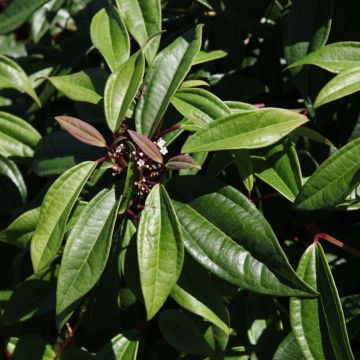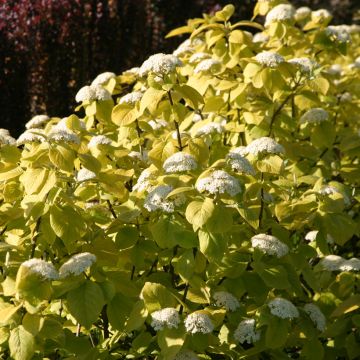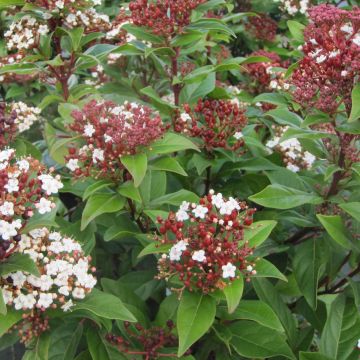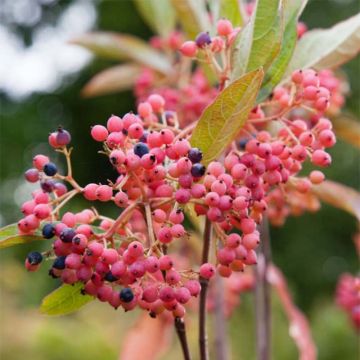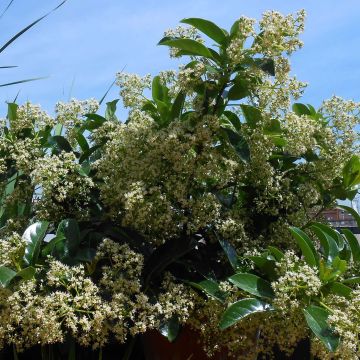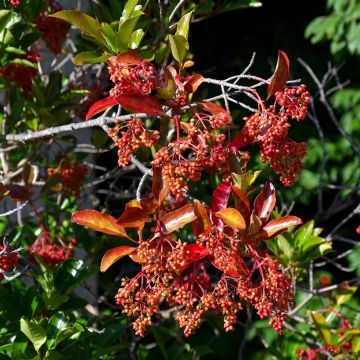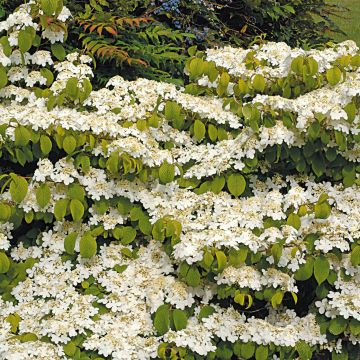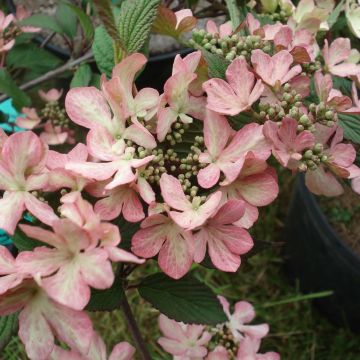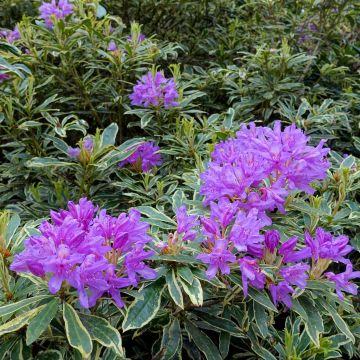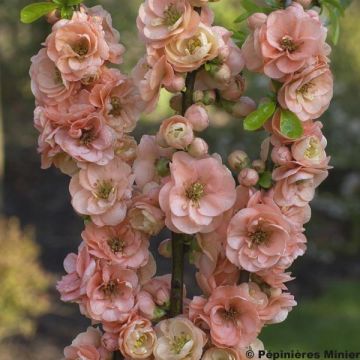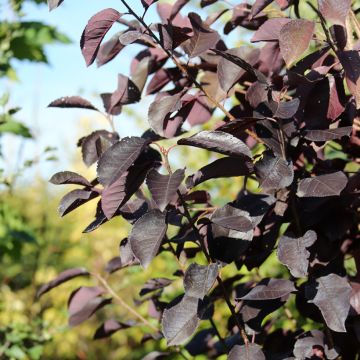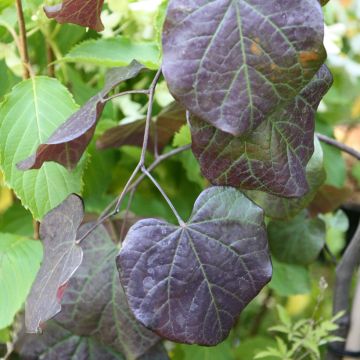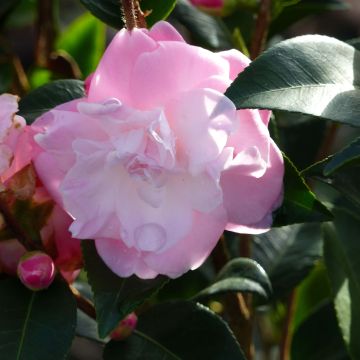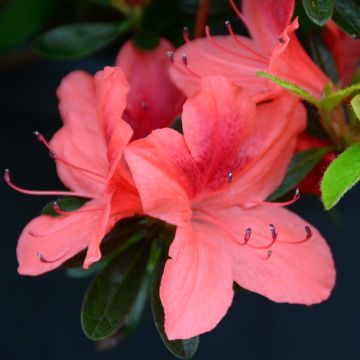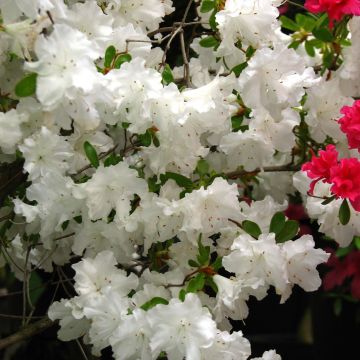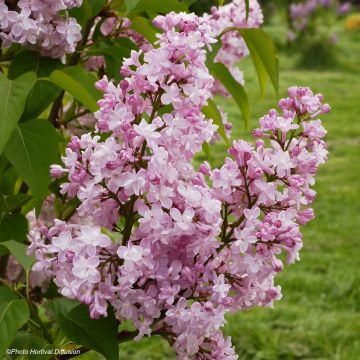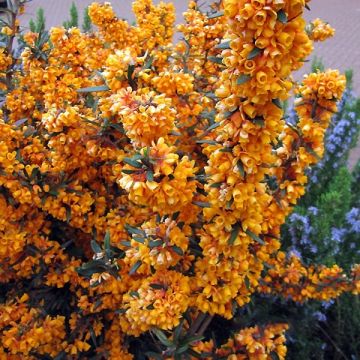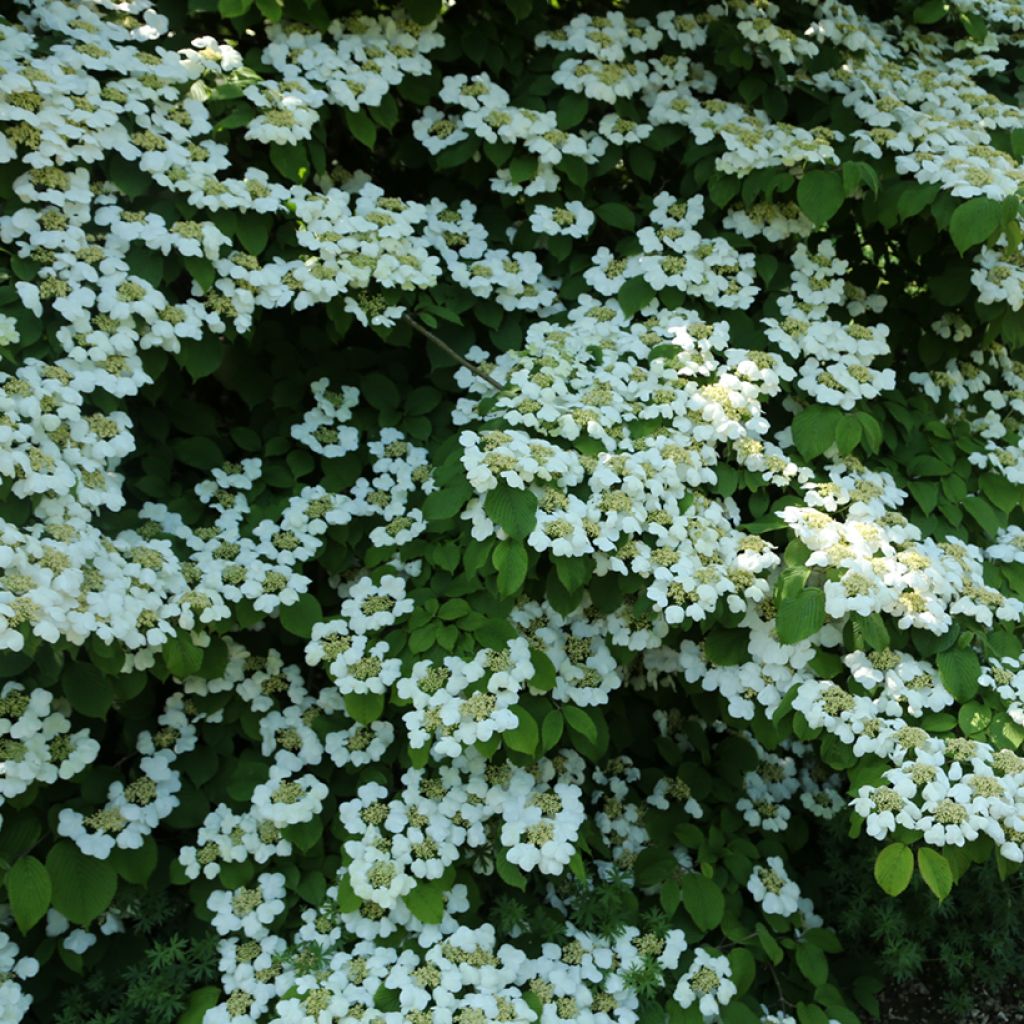

Viburnum plicatum f. tomentosum Cascade - Japanese Snowball
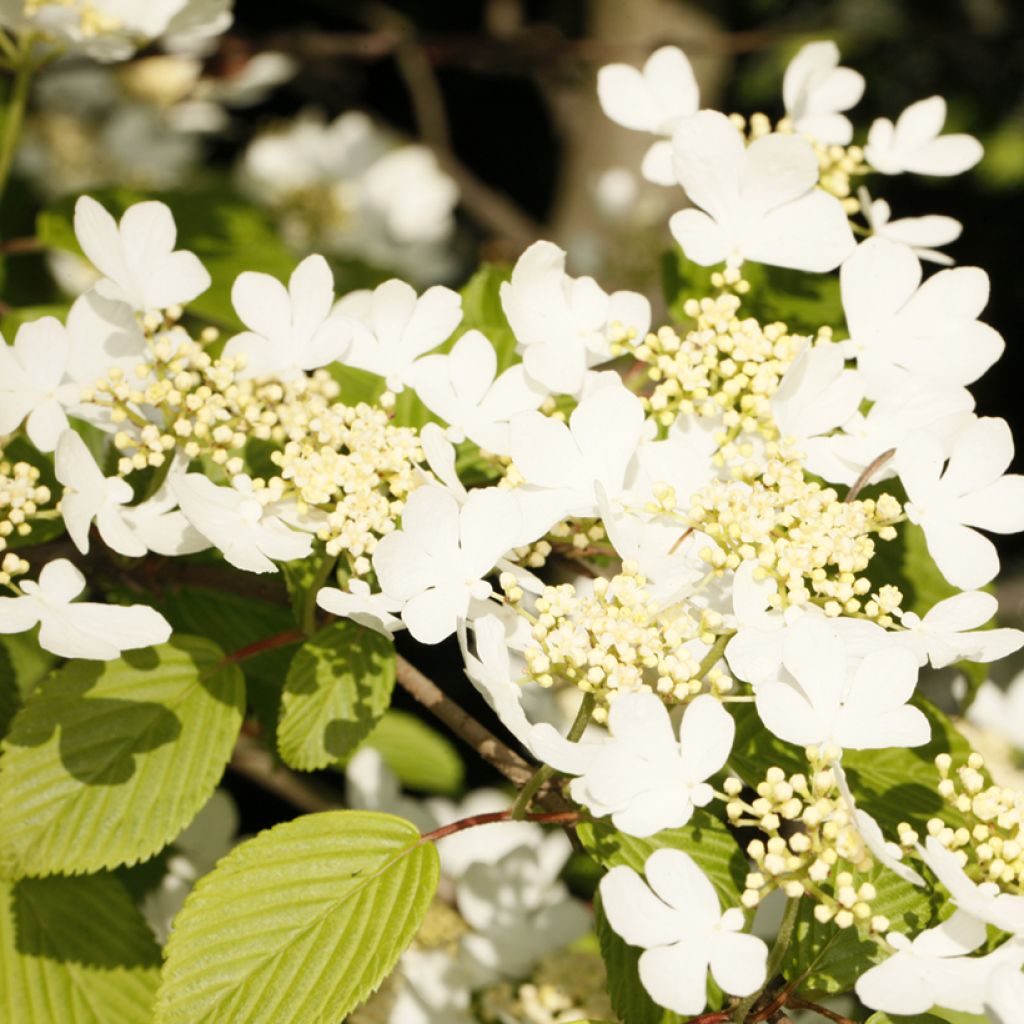

Viburnum plicatum f. tomentosum Cascade - Japanese Snowball
Viburnum plicatum f. tomentosum Cascade - Japanese Snowball
Viburnum plicatum f. tomentosum Cascade
Japanese Snowball, Doublefile Viburnum
This item cannot be shipped to the selected country
Oversize package delivery charge from €6.90
More information
Schedule delivery date,
and select date in basket
This plant carries a 24 months recovery warranty
More information
We guarantee the quality of our plants for a full growing cycle, and will replace at our expense any plant that fails to recover under normal climatic and planting conditions.
Oversize package: home delivery by special carrier from €6.90 per order..
Express home delivery from €8.90.
Does this plant fit my garden?
Set up your Plantfit profile →
Description
Viburnum plicatum f. tomentosum 'Cascade' is a bush from China recognisable by its widely spreading habit, both compact and well-balanced. In spring, the almost horizontal branches of this shrub are adorned with lots of slightly flattened inflorescences ranging from white to pale pink. After pollination, a multitude of red berries form in late summer, tightly packed in beautiful clusters, while the foliage takes on flamboyant tones. In winter, one can admire its delicately tiered branches, with a Japanese charm. This highly ornamental plant is easy to accommodate in any good garden soil, neither too dry nor too chalky.
Viburnum plicatum 'Cascade' belongs to the Viburnaceae family. This horticultural cultivar was selected in 1971. In the wild, in China, the species mainly grows in wooded areas and clear understories. The 'Cascade' variety forms a bush that reaches a maximum height of 1.8 m and a width of 2.2 m. Its growth is moderately slow to slow. It has a spreading and slightly trailing habit that adds a graceful dimension to the garden. Its ovoid leaves, 4 to 10 centimetres long, are green in summer and turn red, purple, yellow, and orange in autumn. It is a deciduous foliage that falls in autumn. The white flowers, about 10 cm in diameter, appear in May and June, forming large flat inflorescences that cover the branches. They are composed of a peripheral crown of well-developed sterile flowers, with elliptical sepals, surrounding small fertile flowers in the form of buds. The pollinated fertile flowers transform into small red berries, black at maturity, gathered in generous clusters. The bark of old branches is grey, while young shoots are light brown.
Viburnum plicatum 'Cascade' is decorative as a solitary specimen, in a shrub bed, or in a flowering hedge. Many shrubs harmonise well with this elegant bush, including Cornus kousa 'Copacabana', Deutzia magnifica, mock orange Philadelphus 'Belle Etoile', and Spirea 'Anthony Waterer'. Together, they will create harmonious and colourful compositions, bringing diversity of shapes and colours to the garden. It can also be planted in a large container on the terrace or balcony.
Report an error about the product description
Plant habit
Flowering
Foliage
Botanical data
Viburnum
plicatum f. tomentosum
Cascade
Viburnaceae
Japanese Snowball, Doublefile Viburnum
Cultivar or hybrid
Other Viburnum
Planting and care
Viburnum plicatum 'Cascade' can be grown in full sun or partial shade. Plant it from November to May, frost-free, in any type of soil without too much limestone and not drying out too much in summer, preferably humus-bearing. This easy-to-care-for bush only requires minimal maintenance. Viburnum is often attacked by aphids, but this poses no great danger. After flowering, you can prune the bush sparingly to maintain its naturally tiered habit. Remove branches that compromise the plant's symmetry.
Planting period
Intended location
Care
This item has not been reviewed yet - be the first to leave a review about it.
Spring-flowering shrubs
Haven't found what you were looking for?
Hardiness is the lowest winter temperature a plant can endure without suffering serious damage or even dying. However, hardiness is affected by location (a sheltered area, such as a patio), protection (winter cover) and soil type (hardiness is improved by well-drained soil).

Photo Sharing Terms & Conditions
In order to encourage gardeners to interact and share their experiences, Promesse de fleurs offers various media enabling content to be uploaded onto its Site - in particular via the ‘Photo sharing’ module.
The User agrees to refrain from:
- Posting any content that is illegal, prejudicial, insulting, racist, inciteful to hatred, revisionist, contrary to public decency, that infringes on privacy or on the privacy rights of third parties, in particular the publicity rights of persons and goods, intellectual property rights, or the right to privacy.
- Submitting content on behalf of a third party;
- Impersonate the identity of a third party and/or publish any personal information about a third party;
In general, the User undertakes to refrain from any unethical behaviour.
All Content (in particular text, comments, files, images, photos, videos, creative works, etc.), which may be subject to property or intellectual property rights, image or other private rights, shall remain the property of the User, subject to the limited rights granted by the terms of the licence granted by Promesse de fleurs as stated below. Users are at liberty to publish or not to publish such Content on the Site, notably via the ‘Photo Sharing’ facility, and accept that this Content shall be made public and freely accessible, notably on the Internet.
Users further acknowledge, undertake to have ,and guarantee that they hold all necessary rights and permissions to publish such material on the Site, in particular with regard to the legislation in force pertaining to any privacy, property, intellectual property, image, or contractual rights, or rights of any other nature. By publishing such Content on the Site, Users acknowledge accepting full liability as publishers of the Content within the meaning of the law, and grant Promesse de fleurs, free of charge, an inclusive, worldwide licence for the said Content for the entire duration of its publication, including all reproduction, representation, up/downloading, displaying, performing, transmission, and storage rights.
Users also grant permission for their name to be linked to the Content and accept that this link may not always be made available.
By engaging in posting material, Users consent to their Content becoming automatically accessible on the Internet, in particular on other sites and/or blogs and/or web pages of the Promesse de fleurs site, including in particular social pages and the Promesse de fleurs catalogue.
Users may secure the removal of entrusted content free of charge by issuing a simple request via our contact form.
The flowering period indicated on our website applies to countries and regions located in USDA zone 8 (France, the United Kingdom, Ireland, the Netherlands, etc.)
It will vary according to where you live:
- In zones 9 to 10 (Italy, Spain, Greece, etc.), flowering will occur about 2 to 4 weeks earlier.
- In zones 6 to 7 (Germany, Poland, Slovenia, and lower mountainous regions), flowering will be delayed by 2 to 3 weeks.
- In zone 5 (Central Europe, Scandinavia), blooming will be delayed by 3 to 5 weeks.
In temperate climates, pruning of spring-flowering shrubs (forsythia, spireas, etc.) should be done just after flowering.
Pruning of summer-flowering shrubs (Indian Lilac, Perovskia, etc.) can be done in winter or spring.
In cold regions as well as with frost-sensitive plants, avoid pruning too early when severe frosts may still occur.
The planting period indicated on our website applies to countries and regions located in USDA zone 8 (France, United Kingdom, Ireland, Netherlands).
It will vary according to where you live:
- In Mediterranean zones (Marseille, Madrid, Milan, etc.), autumn and winter are the best planting periods.
- In continental zones (Strasbourg, Munich, Vienna, etc.), delay planting by 2 to 3 weeks in spring and bring it forward by 2 to 4 weeks in autumn.
- In mountainous regions (the Alps, Pyrenees, Carpathians, etc.), it is best to plant in late spring (May-June) or late summer (August-September).
The harvesting period indicated on our website applies to countries and regions in USDA zone 8 (France, England, Ireland, the Netherlands).
In colder areas (Scandinavia, Poland, Austria...) fruit and vegetable harvests are likely to be delayed by 3-4 weeks.
In warmer areas (Italy, Spain, Greece, etc.), harvesting will probably take place earlier, depending on weather conditions.
The sowing periods indicated on our website apply to countries and regions within USDA Zone 8 (France, UK, Ireland, Netherlands).
In colder areas (Scandinavia, Poland, Austria...), delay any outdoor sowing by 3-4 weeks, or sow under glass.
In warmer climes (Italy, Spain, Greece, etc.), bring outdoor sowing forward by a few weeks.

































